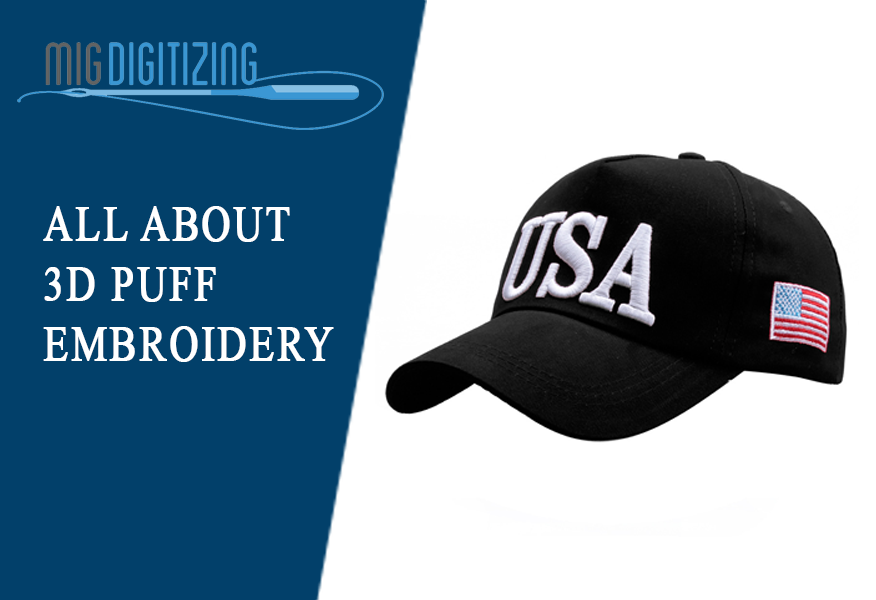
3d puff and 3d foam embroidery was a very popular technique. Anybody can notice it in retail fashion stores. To attract new business this is a great way. You can make sportswear and fashion pieces. Below some simple instruction for you if you are not sure what to do it.
3D foam digitizing technique is as like as applique digitizing. It needs a placement guide, tack, and cover-stitching. Here is one difference, covers stitch also used to cut the foam. It is a high-density Satin stitch.
Choosing a suitable foam material is very important for your job. After the stitch out the excess foam has removed. It will be difficult to remove if the foam is too stiff and strong. The colour of foam will choose as like as the colour of the embroidery thread. 3D foam embroidery is not suitable for washing so do it on caps as these do not wash often.
How to do 3D foam digitizing:
3d puff and 3d foam embroidery are difficult, but you can do it. I explain it below.
Inside the boundary of the shape, digitize a travel run placement guide. Follow a stop and a frame out then place the foam over the area. Tack the foam down using the short (1.7mm) run stitches. By digitizing a narrow column across them any “open-ends” will need to be closed first. It will help to cut the foam at the ends. It will also keep the foam from poking out.
To help with holding down, cutting and covering the foam, next lay an “underlay” with Zigzag, stitch spacing of 1.5—2.0 mm.
The satin covers density should increase 40-60% normal. It will depend on the thickness of the embroidery thread used. It also depends on the height and colour contrast of the foam. With Auto Spacing Off, typical satin density should be 0.2—0.4mm. According to a thickness of the foam used the Pull Compensation should increase 0.3mm-0.5mm. All column overlaps should be at least 3 stitches. On prevent the foam pushing through and creating a gap. Your Tie-off stitches should secure. 4-6 Run stitches of 1mm even you should use.
Rules for 3D Puff:
-
The part of the design that will puff must be the last section to sew. All flat sections of the embroidery must sew first by laying down a piece of 3-D foam.
Upon completion of the sewing, the needle penetrations perforate the foam and allow for the excess to pull.



